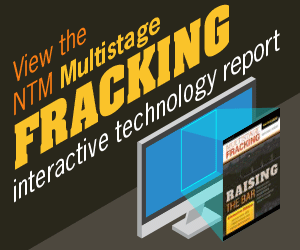Re-Fracking: Low price environment spurs interest in high-grading plays, reinvigorating old wells
- Published: Friday, 01 May 2015
- Author: Godfrey Budd
The current low oil and gas price environment heralds a new supporting role for shale oilfield data, petroleum engineering, frac design and technology—that of “swing producer” enablers.
Until very recently, Saudi Arabia, backed by the Persian Gulf emirates, was regarded as the world's swing producer. “With its immense production capacity, it could raise or lower its output to help the global market adjust to shortages or surpluses,” wrote Daniel Yergin, vice-chairman of IHS, a research and consulting firm, in a New York Times op-ed piece in January.
Last summer and into the fall, with the global economy slowing and, along with it, China's demand for oil, many expected that Saudi Arabia would cut production to steady prices. That didn't happen and the price of oil soon crashed to around $50 a bbl. Although Yergin's Times article anticipates a demand recovery in 2016, following a possible drop in U.S. shale oil production and cutbacks elsewhere, he does not expect a return to $100 prices, “if the [Persian] gulf producers have their way.” But, the article says, “Even at prices well below $100, American shale oil producers will find ways to drive down costs and output will start rising again. The world's new swing producer will find itself back in the swing of things.”
Its “truly disruptive technology” has made shale oil “the decisive new factor in the world oil market in a way that could not have been imagined five years ago,” the article says.
One way shale and tight oil producers can drive down costs and increase production is by refracturing wells originally fractured five to 10 years ago. As little as an estimated eight per cent of a tight oil reservoir’s crude might be produced from its initial frac completion. Using today’s superior hydraulic fracturing technology and targeting less productive segments of the horizontal wellbore, producers can rejuvenate wells that experience notoriously high decline rates of typically 40-70 per cent in the first year.
The cost of refracs can be as little as a quarter the cost to originally drill and frac the well, which typically runs upwards of $8 million per well. But not all wells are good candidates for refracturing, prompting the need for more data and experience to determine which are worth reviving.
For now, more data and some new software tools, better technology and some breathing space for a rethink on frac design issues and challenges are part of a mix that could help the shale sector fine tune the performance of its new role.
BETTER DATA
A software tool from IHS, which has been used internally for about three years to support some of the firm's consulting, was recently made available for sale commercially. Called Performance Evaluator, it contains information on every well brought on production since January 2001 in the U.S. Lower 48 and Canada, with data on about 130 parameters for each well.
Although mostly for investment professionals and mergers and acquisition specialists, the software's extensive sets of organized data can help service companies find out where the action is—and where it is likely to go. “They might want to see how wells did and who's likely to be an anchor customer,” says Raoul Leblanc, senior director, North America, financials group, at IHS.
The database and toolkit include the full range of basic well information like well identification and postal code as well as metrics on area distribution of well quality, and answers to questions like these: How do companies X and Y compare? Are assets improving? Why? Are there poor operators in good areas? Which plays and operators are driving oil and gas supply growth? Which areas are core to operator X? Whose completions are being matched by strong production? Information on well completion, performance, productivity, lateral lengths and other well technical characteristics are also part of the package.
Much of Performance Evaluator's information is based on vast amounts of publicly available data. The tool uses both off-the-shelf software and proprietary algorithms to organize and unpack its data and analysis in an easily accessible format for clients. These include private equity companies, investment banks, oil and gas producers and service companies. Clients receive monthly updates of data.
The tool lays out the sharp disparities in performance among wells in the shale sector in a number of ways. One of these is to divide the play into quintiles, ranking performers from top to bottom. In the southern Texas Eagle Ford formation, for example, the database has information on over 12,000 wells. Averaged across the top quintile, wells in this category have a break-even point at $35 per bbl (figures in US dollars). The top 20 per cent of wells in the Eagle Ford account for about 34 per cent of the play's production. The second, third, fourth and fifth quintiles have break-even points at about $55, $65, $85 and $115, respectively, Leblanc says.
Another software product developed to support consulting, in this case from Carbo Ceramics Inc., organizes highly granular completion data for fracturing design and operations. The software, called Wellworx, is from StrataGen, a Carbo business unit that provides hydraulic fracturing and reservoir consulting services.
Among other things, the Wellworx software uses multi-well, data-driven linear and neural network analysis techniques to provide an index of key completion success indicators for the reservoir. It is also designed to show cause-and-effect relationships between drilling, fracturing and completion parameters and well production performance. The software is supported by analysis and modelling done by StrataGen consultants. “We use the model to estimate how a well could be more effectively completed,” says Robert (Bob) Shelley, director of well performance at StrataGen.
The software is also created on a customized basis. For example, a model could be developed on a group of 30 wells in a field completed in the same formation with good information on more than 100 variables. “We create a database and with some proprietary modelling techniques we fit the data together to develop a predictive model for the 30-plus wells. It can be used several ways—to help optimize future new completions. Or we could use the model to estimate how an existing well could be more effectively completed, and which wells would have the best potential for further improvement. We call it a Worx model,” Shelley says.
The Worx product line includes a suite of software tools. While the IHS software is more geared to provide producers and service outfits with important big-picture, preliminary data that identifies promising areas, techniques and potential clients, the Worx software is designed to identify the best individual well candidates for a specific measure, like a refrac, and derive what needs to be done. Some of the Worx products, like BakkenWorx, for example, are for a specific play.
Shelley warns that operators need to be careful about assumptions for refracs. “What I have found is that just because a well is a poor producer doesn't make it necessarily a good candidate for a refrac. Good wells in good reservoirs are often the best candidates. You need a certain amount of reservoir to get the benefits of a refrac and for evaluating a new technology,” he says.
High-level screening tools can indicate where the refrac potential might be, before more detailed engineering begins, but that can leave a host of unknowns. Where possible, production data on a well-by-well basis is used, Shelley says. “Our approach involves a lot of detail on a frac—spacing, precise info on proppant, perforations, staging method, problems encountered, also a large set of variables on reservoir characteristics.”
REFRAC THE BEST, LEAVE THE REST
A common misperception in the industry is that the best candidates for refracs are poorly stimulated wells, under-performing wells, or wells that used out-of-date completion techniques, says Mike Vincent, an independent frac consultant and author of many SPE papers on fracturing.
“While wells receiving a poor initial stimulation are often good candidates, the vast majority of field studies indicate that the most profitable candidates for re-stimulation were excellent wells, not poor wells,” he says. “We have demonstrated that we can take the best well in most fields and make it better. Even wells fractured one year ago can typically be improved pumping re-stimulation treatments of significantly lower quality and expense compared to the initial job.”
He says the slowdown has given companies a chance to identify flaws in their initial fracs and focus on re-stimulation opportunities.
Technology and fracturing techniques used in the initial frac are not necessarily important factors when evaluating a prospective refrac. Also, Vincent says, better data can help with ranking, but analyzing data and making the right decision based on data is difficult.
The collapse of propped open fractures is widespread, for example, but happens as a result of a variety of factors. “We have very compelling data that out propped fracs collapse in almost every reservoir, and we have dozens of suspected mechanisms that may contribute to this problem. Refracs can address some, but not all, of these problems. But they are most likely different culprits in each reservoir,” Vincent says.
“When refracs work, they are among the most profitable opportunities in the industry,” he adds.
The current economic environment of cash-constrained companies reducing drilling budgets has resulted in Vincent receiving “dozens of requests for courses on re-stimulation. Instead of asking about optimization of initial fracs, everyone wants to know how to re-stimulate existing wells, and how to cut costs without ruining the well productivity.”
The implication of this and much of what he says on refracs is that a big part of the solution involves figuring out how the initial frac should have been optimized. Vincent does not anticipate much of a role for refrac-specific technology.
EFFECTIVE PLACEMENT
Isolation of sections in a refrac can be important, however, as a fracture is likely to propagate preferentially in rock that is void or depleted, says Eric Schmelzl, vice-president, strategic business, at NCS Multistage. “The ability to re-isolate intervals removes a lot of the risk of a refrac. You can always circulate the well and control the fluid in the well,” he says.
NCS is now offering two solutions, suitable for refracs and other applications, which allow the operator to perforate and also isolate and frac between existing perforations. Both straddle tools in the company's Mongoose line are designed to stimulate multiple stages in a single trip on coiled tubing or threaded pipe. Which one is used depends on well conditions, Schmelzl says. The Mongoose tools can be used in either cemented or open-hole wells, with a liner.
A straddle tool from Interra Energy Services Ltd., called AccuStim, uses a packer to isolate the fracture zone behind it, and a cup system to isolate the area in front of the tool. “It allows you to isolate each frac zone on any type of well—plug-and-perf, or open with a packer. It's designed to give the ultimate in reliability. It's a tool that performs under very harsh conditions,” says Will Gardner, manager of business development at Interra.
If necessary, the operator can sand-jet new perforations in the casing for additional fracs. The tool has a slimmer diameter than some of its earlier iterations so that it can reach inside wells that used earlier versions of ball-drop systems.
This concern also shaped a system for refracs developed at Packers Plus. “A method we've been using for a couple of years is an inter-liner refrac system, for when the first frac had too few successful stages,” says Dan Themig, president and chief executive officer of Packers Plus.
The company is doing refracs on wells initially completed with a cemented liner and ball-drop system. “We put a 30-stage frac on a well that had earlier [been a] five-stage one, but with a smaller ball-drop system,” Themig says.
Like others, he makes the point that there is plenty of room for better optimization of initial fracs.





